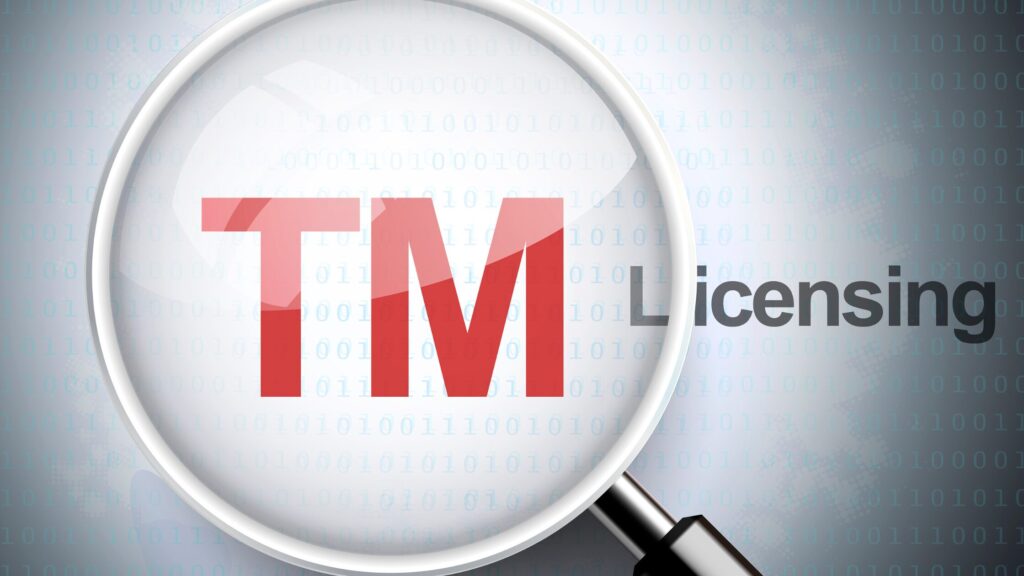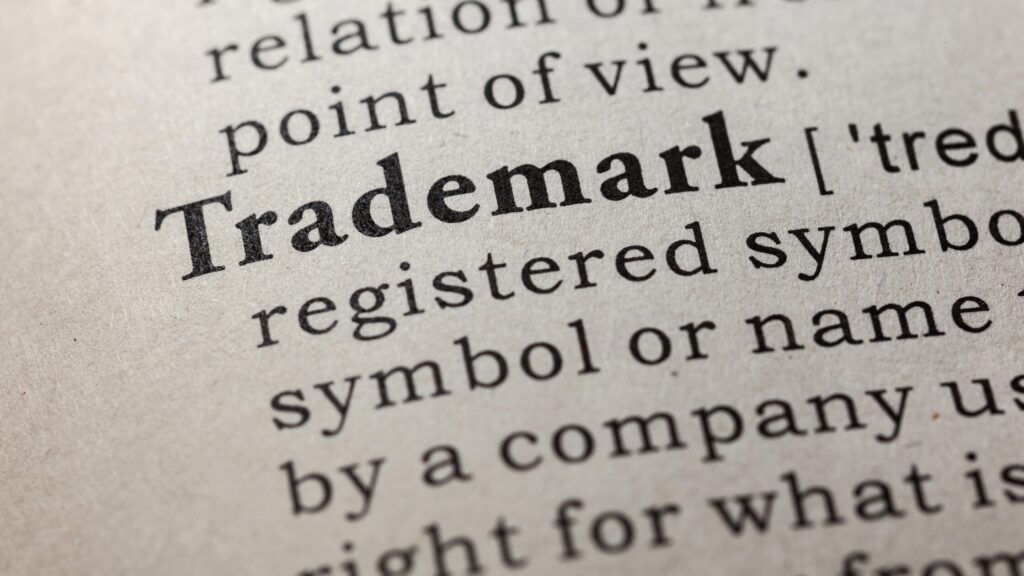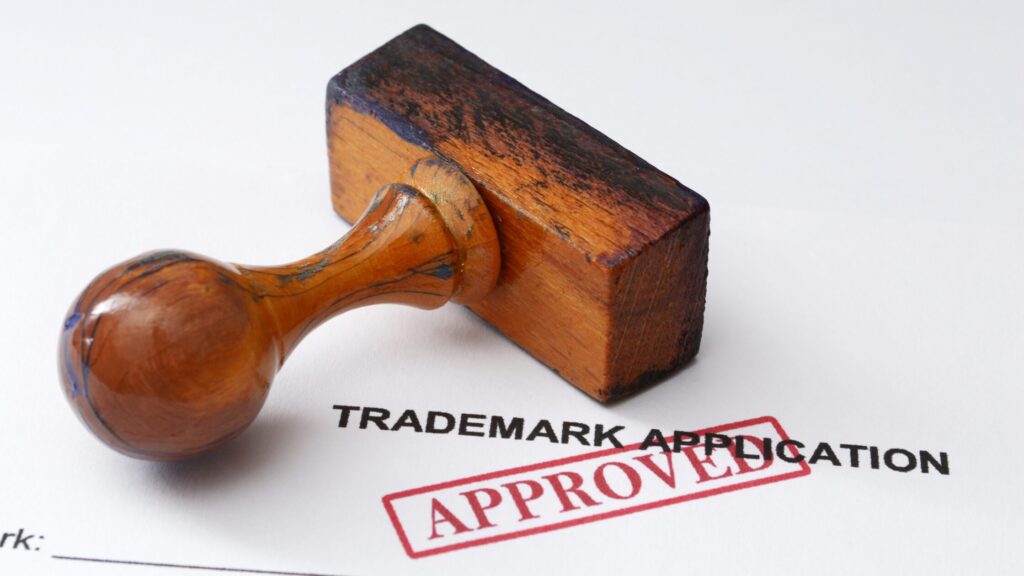How to Register a Trademark in India? The Comprehensive 5-Step Beginner Guide.

How to register a trademark in India? A brand comprises various elements like the name, logo, and more, with trademarks serving as the legal shield for the brand name, enabling your offerings to stand out from the competition. Trademarks are indispensable assets, as they safeguard the reputation of your products. This article will delve into how to register a trademark in India and highlight the benefits of securing a trademark registration.
Table of Contents
Introduction
In today’s fiercely competitive market, branding is everything. It distinguishes your business and its offerings from competitors, building a unique identity in the minds of consumers. At the core of branding lies the concept of trademarks, a powerful tool that legally protects this identity and ensures your business stands out. This article will provide the proper insight into what a trademark is and how to register a trademark in India.
TLDR – How to register a trademark in India?
| Step | Description | Key Actions |
|---|---|---|
| 1. Trademark Search | Conduct a comprehensive search to ensure the uniqueness of your trademark. | – Use the Indian Trade Marks Registry’s online database. – Check for similarities with existing trademarks. |
| 2. Prepare Your Application | Gather necessary documents and identify the correct trademark class. | – Determine the appropriate class (out of 45) for your goods/services. – Assemble required documents including identity proof and business registration. |
| 3. Filing the Application | Submit your trademark application online or offline. | – Complete and submit Form TM-A. – Pay the application fee, which varies based on the applicant’s nature and submission mode. |
| 4. Examination of the Trademark | The Trademark Office examines your application against existing or pending trademarks. | – Respond to any objections or attend a hearing if required. – Provide evidence to support your trademark claim. |
| 5. Publication and Registration | Following approval, your trademark is published in the Trademark Journal. | – Monitor the opposition period (120 days). – Receive the certificate of registration upon successful application. |
What is a Trademark?
A trademark is any recognizable sign, design, or expression that identifies products or services of a particular source from those of others. It can be a word, phrase, symbol, design, or a combination of these elements. Trademarks are not just limited to company names or product names; they can also include logos, taglines, and even unique packaging features. The essence of a trademark is to signal the source of goods or services to consumers, ensuring they know exactly who they are buying from. To know how to register a trademark in India, it is necessary to know about the trademark. To know how to register a trademark in India, it is necessary to know about the trademark.
Importance of Trademark in business
Before knowing how to register a trademark in India, now should know the importance of trademark registration in India. Below we have highlighted a few important points related to the trademark.
Legal Protection
Once registered, a trademark provides legal protection against infringement, meaning no other business can use a mark that is substantially similar to yours for similar goods or services. This is crucial for safeguarding your brand’s integrity and value. After the trademark registration is done, your brand and intellectual property can be protected.
Brand Identity
Trademarks serve as an efficient commercial communication tool to capture customer attention and make your business, products, and services stand out.
Asset Building
Trademarks can become a valuable asset over time. The more your business reputation grows, the more valuable your brand will be.
Exclusive Rights
Trademark registration grants you exclusive rights to use the mark across India for the goods and services it is registered under. This exclusivity is key to establishing a unique brand presence.
Prevention of Unfair Competition
Trademarks help prevent unfair competition by prohibiting others from using trademarks that are identical or “confusingly similar” to yours, thus protecting the consumers as well as the rights of the trademark owner.
The basis for Global Trademark Registration
With a registered trademark in India, businesses can lay the foundation for registering the trademark in other countries, facilitating brand expansion and protection internationally.
Understanding the Indian Trademark System
Understanding the Indian trademark system is helpful for a better understanding of how to register a trademark in India. Navigating the Indian trademark system is pivotal for businesses aiming to secure and enforce their brand identity legally. This section breaks down the legal framework surrounding trademarks in India and underscores the benefits of registering a trademark.
Legal Framework
India’s trademark law is encapsulated in the Trademarks Act, of 1999, and is administered by the Controller General of Patents, Designs, and Trademarks, under the Ministry of Commerce and Industry. The Act provides comprehensive details on the registration process, rights conferred by registration, infringement, penalties for unauthorized use, and procedures for dispute resolution.
The Indian trademark system operates on a “first to file” basis, meaning that the first person to file a trademark application will generally have priority over others for registration. This system emphasizes the importance of timely registration to secure exclusive rights to a trademark. In the upcoming article, we will be looking more into how to register a trademark in India.
You can also read – 15 Best ZeroFox Competitors and Alternatives
How to register a trademark online?
Registering a trademark online is a convenient and efficient way to protect your brand identity. Here’s a simplified guide to help you navigate the process of online trademark registration, specifically tailored for jurisdictions with digital trademark application systems.
Below we included a concise version of the online trademark registration steps:
Trademark Search: Perform a detailed search in the online trademark database to ensure your mark isn’t already taken or too similar to existing trademarks.
Account Creation: Sign up for an account on your country’s trademark office website to access the application form and manage your application.
Application Submission:
- Fill out the online form with your trademark details, including the owner’s information and the classification of goods/services.
- Upload necessary supporting documents, like identity proof and a representation of the trademark.
Fee Payment: Calculate and pay the applicable fee online based on your application’s class(es) and entity type.
Application Tracking: After submission, use your account to monitor the status of your application through the examination, objection (if any), and publication phases.
Key Tips for Online Trademark Registration
- Accuracy is Key: Ensure all information provided is accurate and all required documents are clearly legible to avoid delays or rejections.
- Be Comprehensive: Provide a broad description of your goods/services to ensure comprehensive protection, but be specific enough to avoid being too generic.
- Legal Advice: Consider consulting a trademark attorney for advice, especially if you encounter complex issues such as objections.
How to register a trademark in India in 5 steps?
How to register a trademark in India? Registering a trademark in India involves a detailed process designed to protect your brand and ensure it stands out in the marketplace. Here’s a concise overview of the 5 steps of how to register a trademark in India:
Step 1: Trademark Search

Step 1 of how to register a trademark in India is trademark search. Before diving into the trademark registration process, conducting a thorough trademark search is crucial. This step is not just preliminary; it’s a strategic move to ensure that your trademark doesn’t infringe on existing trademarks and is likely to be accepted upon application. Here’s how to navigate this essential phase. Below we have included the table and explained the steps used in Trademark Search:
| Step | Action | Tools/Resources | Purpose |
|---|---|---|---|
| 1 | Conduct Preliminary Search | Online Trademark Database (IP India) | To identify any direct conflicts with existing trademarks, ensuring your trademark is unique. |
| 2 | Broaden the Search Scope | Internet Searches, Domain Name Registries | To uncover potential conflicts in the broader market, including unregistered but commonly used marks. |
| 3 | Analyze Similar Industries and Classes | Nice Classification System | To ensure no conflicts across related classes of goods and services. |
| 4 | Seek Professional Advice (Optional) | Trademark Attorney or Search Firm | To identify any direct conflicts with existing trademarks, ensure your trademark is unique. |
| 5 | Document Findings and Decide on Trademark | Documentation Tools (Spreadsheets, Notes) | For a comprehensive analysis and legal opinion on the registration of your trademark. |
| 6 | Prepare for Possible Adjustment or Rebranding | Creative Brainstorming Tools | In case of conflicts, be prepared to adjust your trademark or consider rebranding options. |
1. Conduct a Trademark Search
Use the official online trademark database to check for identical or similar trademarks. This is a critical first step in identifying clear conflicts.
2. Broaden the Search Scope
Extend your search beyond the official database to include internet searches and domain name registries, capturing a wider range of potential conflicts, especially with unregistered trademarks that might still have common law rights.
3. Analyze Similar Industries and Classes
Investigate trademarks in related industries and those registered under similar classes. Trademarks are registered under specific classes of goods or services, and conflicts can arise within related categories.
4. Seek Professional Advice (Optional)
Consulting with a trademark attorney or professional search firm can be beneficial for a more thorough analysis and legal perspective on your trademark’s viability.
5. Document Findings and Decide on Trademark
Keep a detailed record of your search results and analysis. Based on your findings, decide whether to proceed with your trademark application, make adjustments, or consider a different mark.
6. Prepare for Possible Adjustment or Rebranding
If potential conflicts are identified, be ready to adjust your proposed trademark or explore rebranding options. Creative brainstorming and flexibility at this stage can save significant time and resources later on.
Step 2: Filling the Trademark Application

The second step of how to register a trademark in India is filling the trademark application. Once you’ve ensured that your trademark is unique and unlikely to infringe on any existing trademarks through a comprehensive search, the next crucial step is to officially file your trademark application with the Indian Trademark Registry. This process involves several key actions and decisions to ensure your application is correctly submitted and processed. Let’s delve into the details of this step.
| Step | Action | Required Documents | Considerations |
|---|---|---|---|
| 1 | Decide on Application Mode | N/A | Choose between online and offline filing based on convenience and accessibility. |
| 2 | Fill Out the Application Form (TM-A) | – Trademark Application Form (TM-A) | Ensure accurate and complete information about the trademark, applicant, and class of goods/services. |
| 3 | Attach Supporting Documents | – Proof of Applicant’s Identity | Compile necessary documents, including identity proof, address proof, and a representation of the trademark. |
| – Proof of Business Registration (if applicable) | Ensure all documents are up-to-date and correctly formatted. | ||
| – Trademark Representation | |||
| – Power of Attorney (if filed by an agent) | |||
| 4 | Pay the Application Fee | N/A | Check the latest fee structure; fees vary by applicant type and filing mode. |
| 5 | Submit the Application | N/A | Double-check the application for completeness and accuracy before submission. |
| 6 | Obtain Acknowledgement Receipt | N/A | Secure the official receipt and application number for tracking and future reference. |
Decide on Application Mode
Choosing the right filing method is crucial. The online process is generally quicker and slightly cheaper, but both methods are equally valid.
Fill Out the Application Form for Brand Name Registration(TM-A)
This form is comprehensive and requires detailed information about the trademark and the applicant. It’s crucial to classify your goods or services correctly under the appropriate Nice Classification.
Attach Supporting Documents
Each document plays a critical role in verifying the details of the application and the trademark’s legitimacy. The representation of the trademark should be clear and precise.
Pay the Application Fee
The fee structure depends on the type of applicant (individual, small enterprise, or company) and the mode of application (online or offline). It’s important to check the most current fees to ensure correct payment.
Submit the Application
Whether you choose to file online through the IP India website or offline at a Trademark Registry office, ensure all parts of the application are complete and that you’ve attached all necessary documents.
Obtain Acknowledgement Receipt
After submission, you will receive an official receipt and application number. This is crucial for tracking the status of your application throughout the process.
Step 3: Examination of the Trademark Application

The third step how to register a trademark in India is the examination of the trademark application. After successfully filing your trademark application with the Indian Trademark Registry, the next step in the registration process is the examination of your application. This critical phase involves a detailed review by the Trademark Examiner to ensure that your application meets all legal and procedural requirements.
| Step | Action | Expected Response | Considerations |
|---|---|---|---|
| 1 | Receipt of Examination Report | – Formality Check Failures | Review the report carefully for any objections or discrepancies noted by the examiner. |
| – Substantive Issues | Immediate and thorough understanding of the objections is crucial for a strategic response. | ||
| 2 | Analyze Objections | – Clarification Requests | Determine if objections are due to misunderstandings or require evidence of distinctiveness. |
| – Similar Trademarks Noted | Identify potential conflicts and assess the likelihood of overcoming them. | ||
| 3 | Prepare Response to Objections | – Arguments Against Substantive Issues | Craft a well-reasoned and evidence-backed response to address each objection. |
| – Evidence of Distinctiveness | Collect and present evidence such as market surveys, sales data, or advertising materials. | ||
| 4 | Submit Response to the Trademark Office | – Acceptance of Response | Adhere to the deadline and ensure that your submission is complete and persuasive. |
| – Further Clarification Requested | Be prepared to provide additional information or clarification if requested by the Trademark Office. | ||
| 5 | Attend Hearing (if required) | – Hearing Notice | Use this opportunity to personally advocate for your trademark’s registration. |
| – Final Decision | Effective presentation and argumentation at the hearing can be pivotal. | ||
| 6 | Receive Final Decision | – Approval for Publication | Celebrate the progress but prepare for the possibility of opposition during the publication phase. |
| – Rejection | Consider appealing the decision or re-evaluating your trademark strategy if faced |
Additional Considerations:
- Immediate Action: Upon receipt of the examination report, act promptly to assess and prepare your response. Delays can complicate the process and potentially harm your chances of successful registration.
- Legal Expertise: Engaging a trademark attorney can be particularly beneficial, especially when dealing with substantive issues or preparing for a hearing.
- Strategic Adjustments: If the objections are significant, consider whether making adjustments to your trademark application, such as amending the goods/services list or altering the trademark itself, could facilitate approval.
- Continuous Monitoring: Keep an eye on the status of your application through the Trademark Office’s website and be proactive in addressing any requests or notifications.
Step 4: Trademark Publication and Opposition

Step 4 of how to register a trademark in India is trademark publication and opposition, if your trademark application clears all objections, it progresses to a crucial stage: publication in the Trademark Journal. This step is fundamental in the trademark registration process in India, serving as a public notice and opening the floor for any opposition to your claim.
| Step | Action | Expected Outcome | Considerations |
|---|---|---|---|
| 1 | Trademark Application Publication | – Trademark Published in Journal | Ensure that all details are accurately represented in the publication to avoid any basis for opposition. |
| 2 | Monitoring for Opposition | – Receipt of Opposition Notice (if any) | Stay vigilant during the opposition period and prepare to respond if your trademark application is opposed. |
| 3 | Responding to Opposition | – Filing of Counter-Statement | Draft a comprehensive response addressing each point of opposition with supporting evidence. |
| 4 | Evidence Round | – Submission of Evidence | Both parties may be asked to submit additional evidence supporting their claims. |
| 5 | Attend Hearing (if required) | – Hearing Notification | Prepare to present your case effectively before the Trademark Hearing Officer. |
| 6 | Final Decision by Trademark Office | – Decision on Opposition | The outcome could either be the continuation towards registration or refusal based on the opposition. |
Additional Considerations:
- Preparation for Opposition: Understanding that opposition is a possibility, it’s wise to prepare your defense strategy in advance. This includes gathering evidence of trademark use, distinctiveness, and any other relevant documentation that supports your claim to the trademark.
- Legal Representation: Consider engaging a trademark attorney to navigate the opposition process. Experienced legal counsel can provide invaluable assistance in drafting counter-statements, gathering evidence, and representing you during hearings.
- Timeline Awareness: Be mindful of the deadlines for responding to opposition notices and submitting evidence. Missing these deadlines can adversely affect your trademark application.
- Strategic Response: In responding to opposition, a strategic approach that addresses all points raised by the opponent, while also reinforcing the strengths of your trademark application, is crucial.
- Alternative Resolutions: Sometimes, it’s possible to resolve opposition through negotiation or coexistence agreements. Be open to such avenues, as they can provide a faster and less contentious path to trademark registration.
- Continued Monitoring: Even after successfully overcoming opposition, continue to monitor the Trademark Journal and market for potential infringements or challenges to your now-registered trademark.
Step 5: Trademark Registration Certificate

Step 5 of how to register a trademark in India is a trademark registration certificate. After successfully navigating the examination, publication, and any opposition phases, the final step in securing your trademark in India is the issuance of the Trademark Registration Certificate. Here’s what you need to know about obtaining and maintaining your Trademark Registration Certificate.
| Step | Action | Expected Outcome | Considerations |
|---|---|---|---|
| 1 | Approval Notification | – Receipt of Approval Notice | Once your application successfully passes the opposition phase, you’ll be notified of its approval. |
| 2 | Issuance of Registration Certificate | – Trademark Registration Certificate Issued | The certificate is proof of trademark ownership and details the scope of protection. |
| 3 | Review Certificate Details | – Verification of Certificate Accuracy | Ensure all details on the certificate, including owner name and trademark specifics, are correct. |
| 4 | Trademark Use and Monitoring | – Ongoing Use of Trademark | Use your trademark in commerce to maintain its strength and validity. Monitor for potential infringements. |
| 5 | Plan for Renewal | – Reminder Setup for Renewal Deadline | Trademark registration is valid for 10 years from the date of registration. Plan for timely renewal. |
| 6 | Renewal Submission | – Trademark Renewal Application Submitted | Submit the renewal application along with the prescribed fee before the expiry date to maintain protection. |
| 7 | Address Changes and Updates | – Updated Trademark Details | Keep your trademark registration details current by notifying the registry of any changes. |
Additional Considerations:
- Digital Certificate Access: Familiarize yourself with accessing your digital Trademark Registration Certificate, as physical copies are increasingly being replaced by electronic ones.
- Legal Protection: Understand that your trademark registration provides legal protection for your brand within the scope of the goods and services listed. It grants you exclusive rights to use the trademark in the market.
- Infringement Actions: Be prepared to take action against any unauthorized use of your trademark to enforce your rights and prevent dilution of your brand.
- Maintenance of Rights: Regularly use your trademark and monitor its use in the marketplace to maintain your rights. Non-use of a trademark can lead to challenges against your registration.
- Renewal Alerts: Set reminders for your trademark renewal well in advance of the expiry date. Consider using legal services or trademark management software to keep track of renewal deadlines.
- Documentation and Records: Maintain thorough records of your trademark use, registration details, renewals, and any legal actions related to your trademark. This documentation can be invaluable in legal disputes and for future renewals.
The above-mentioned steps of how to register a trademark in India have covered all the requirements of registering the trademark in India.
You can also read – Top 10 Best Phishing Tools for Advanced Protection (2024)
Conclusion
Registering a trademark in India is a detailed process that requires careful preparation and attention to legal nuances. By following these steps, beginners can navigate the process more confidently, ensuring their brand is protected under Indian law.
FAQs
How long does the trademark registration process take in India?
Typically, the process can take 18-24 months, subject to the application’s complexity and any objections encountered.
Can I use the ™ symbol after applying?
Yes, you can use the ™ symbol to indicate that your trademark is under application. Once registered, you can use the ® symbol.
What are the fees for trademark registration in India?
Fees vary based on the applicant type and mode of application. For individuals, startups, and small enterprises, the online application fee is INR 4,500 per class. For others, it’s INR 9,000 per class.
Who can apply for a trademark?
Individuals, businesses, organizations, and even governments can apply for trademarks.






